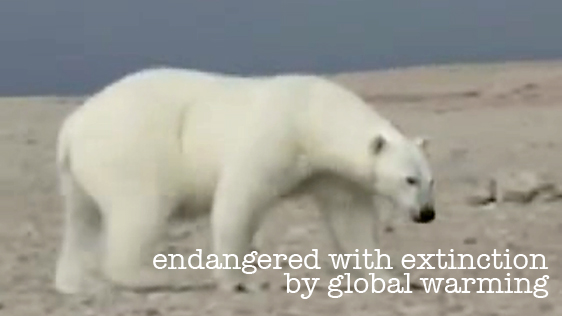
The global climate change crisis may soon enter a new phase in terms of human society's reaction, efforts to curb harmful activities that exacerbate the problem. The United States Dept. of the Interior is considering a proposal to list the polar bear as the first species facing extinction specifically as a side-effect of global warming.
The move would fall under the regulatory powers of the Endangered Species Act, and environmental activists believe it could be used as leverage to push for the shutting down of projects that would bring new carbon-emissions-intensive activities (like new coal-fired power plants) into use.
It is not clear that the Endangered Species Act would become a comfortable standard by which to measure the environmental footprint of new industries or specifically new power and chemical plants, but a recent ruling by the US Supreme Court, requiring that the government regulate carbon dioxide as a harmful pollutant, seems to show that the law is moving in that direction.
As the polar bear is dependent on the presence of large chunks of floating sea ice for its seal hunting, the increasing lack of ice in northern summer months has led to speculation the bears' habitat is effectively disappearing. Researchers project that more than two-thirds of the current population could be gone by mid-century.
This particular mega-fauna could be the canary in the coal mine, so to speak, warning of how excess carbon emissions could have a destructive impact on complex habitat around the globe. In the US, environmental activists are suing to get the bear listed as global-warming endangered, and to force coal-fired power plants to produce thorough studies demonstrating how their activities would not negatively impact the bears' habitat, thousands of miles away.
The feeling among many, both in the scientific world and in the regulatory business, is coming around to the view that for too long it was assumed there was no impact, or that the distances are too great to trace such fallout, but that logic is no longer enough. There is evidence of real and traceable impact, and those who seek to capitalize from processes which increase the risk should have to show their plans for how not to.
It may only be now, as policy-making and environmental research begin to converge in a more serious and well-thought-out way, that the standard of sustainable development actually penetrates into the planning process at the federal level. Industrial activities with a high environmental cost may be seen increasingly as not only unfortunate, but beyond the law, where public health and conservation are concerned.
One of the key questions will be, to what degree and how soon to top-level policy-makers integrate the long-term survivability of other species into the planning for a sustainable form of human economic development?
MORE AT
LA Times: "U.S. close to decision on polar bears"
NY Times: "Justices Rule Against Bush Administration on Emissions"











